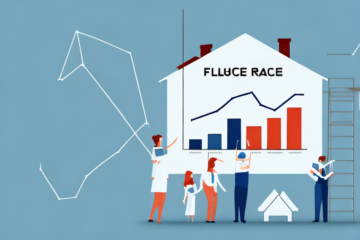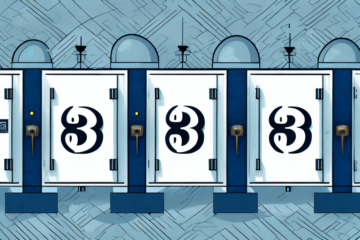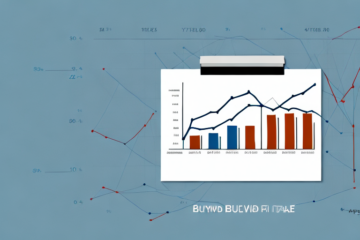What Is a 2/28 Adjustable-Rate Mortgage (2/28 ARM)?
If you’re in the market for a mortgage, you’ve probably come across the term 2/28 ARM. This type of mortgage may sound appealing at first glance, but it’s important to understand exactly what it entails before signing on the dotted line. In this article, we’ll take a close look at 2/28 ARMs, including how they work, their advantages and disadvantages, eligibility criteria, and much more.
Understanding the Concept of Adjustable-Rate Mortgages (ARMs)
Before diving into the specifics of 2/28 ARMs, it’s helpful to have a good understanding of adjustable-rate mortgages (ARMs) in general. As the name suggests, an ARM is a type of mortgage with an interest rate that can adjust over time. Unlike a fixed-rate mortgage (FRM), which has a set interest rate for the life of the loan, an ARM can see its interest rate change at specified intervals. This can be a double-edged sword for homeowners, as it can lead to lower payments in some cases, but higher payments in others.
One of the main advantages of ARMs is that they often start with a lower interest rate than FRMs, which can make them more affordable for borrowers in the short term. Additionally, some ARMs come with rate caps, which limit how much the interest rate can increase over time, providing some protection for borrowers.
However, ARMs also come with some risks. If interest rates rise significantly, borrowers with ARMs could see their monthly payments increase substantially, potentially making their mortgage unaffordable. Additionally, some ARMs come with prepayment penalties, which can make it more expensive for borrowers to refinance or pay off their mortgage early.
How Does a 2/28 ARM Work?
Now, let’s turn our attention specifically to 2/28 ARMs. This type of mortgage has a fixed interest rate for the first two years of the loan term (hence the “2/28” designation), after which the interest rate can adjust once per year for the remaining 28 years. The interest rate adjustment is typically based on an index, such as the London Interbank Offered Rate (LIBOR), plus a margin, which is set by the lender. This means that if the index increases, so will your interest rate (and vice versa).
It’s important to note that 2/28 ARMs often come with lower initial interest rates than traditional fixed-rate mortgages. This can make them an attractive option for borrowers who plan to sell or refinance their home before the end of the initial fixed-rate period. However, it’s also important to carefully consider the potential risks and costs associated with an adjustable-rate mortgage, such as the possibility of your monthly payments increasing significantly if interest rates rise.
Advantages and Disadvantages of 2/28 ARMs
There are both advantages and disadvantages to consider when it comes to 2/28 ARMs. On the plus side, these mortgages often come with lower interest rates than fixed-rate mortgages, which can result in lower monthly payments. They can also be easier to qualify for, as the initial payments are lower. However, the risk of rising interest rates after the initial two-year period is over means that payments could become significantly higher at that point. Homeowners could potentially face “payment shock” if they haven’t budgeted appropriately. Additionally, 2/28 ARMs may come with prepayment penalties, which can be costly if you decide to refinance or sell your home before the initial two-year period is up.
Another disadvantage of 2/28 ARMs is that they offer less stability than fixed-rate mortgages. With a fixed-rate mortgage, your interest rate and monthly payment remain the same throughout the life of the loan. However, with a 2/28 ARM, your interest rate and monthly payment can change after the initial two-year period. This uncertainty can make it difficult to plan for the future and can cause financial stress for some homeowners.
On the other hand, one advantage of 2/28 ARMs is that they can be a good option for borrowers who plan to sell or refinance their home within the first two years of the loan. Because the initial interest rate is lower, borrowers can save money on their monthly payments during this time. If they sell or refinance before the two-year period is up, they can avoid the risk of rising interest rates and payment shock. However, it’s important to carefully consider your plans for the future before choosing a 2/28 ARM, as unexpected changes in your circumstances could leave you with a higher monthly payment than you can afford.
Differences Between Fixed-Rate and Adjustable-Rate Mortgages
As we’ve already hinted at, there are some significant differences between fixed-rate mortgages (FRMs) and adjustable-rate mortgages (ARMs). The primary difference is in the way the interest rate is calculated – as mentioned, FRMs have a set interest rate for the life of the loan, while ARMs can adjust up or down. Another difference is that FRMs tend to come with longer loan terms than ARMs – typically 30 years versus 30 for FRMs.
One additional difference between FRMs and ARMs is the initial interest rate. ARMs typically have a lower initial interest rate than FRMs, which can make them more attractive to borrowers who plan to sell or refinance their home before the rate adjusts. However, once the rate adjusts, it can increase significantly and cause the borrower’s monthly payments to rise. In contrast, FRMs have a higher initial interest rate, but the rate remains the same throughout the life of the loan, providing borrowers with more stability and predictability in their monthly payments.
The Risk of 2/28 ARMs for Homebuyers
One of the biggest risks associated with 2/28 ARMs is the potential for payment shock after the initial two-year period is over. This can occur if interest rates rise significantly, causing monthly payments to increase dramatically. Homebuyers who take out a 2/28 ARM without fully understanding the potential risks and planning for contingencies could find themselves in financial trouble down the line.
Another risk of 2/28 ARMs is the possibility of negative amortization. This occurs when the monthly payment is not enough to cover the interest owed, causing the unpaid interest to be added to the principal balance. This can lead to the borrower owing more than the original loan amount, making it difficult to refinance or sell the property.
It’s important for homebuyers to carefully consider their financial situation and long-term goals before choosing a 2/28 ARM. They should also work with a reputable lender who can provide clear and transparent information about the loan terms and potential risks. Homebuyers who are not comfortable with the potential risks of a 2/28 ARM may want to consider other loan options, such as a fixed-rate mortgage.
Eligibility Criteria for 2/28 ARMs
Like any type of mortgage, there are certain eligibility criteria that homebuyers must meet in order to qualify for a 2/28 ARM. These may vary depending on the lender and the borrower’s financial situation. Some factors that lenders typically consider include credit score, employment history, income, debt-to-income ratio, and more. It’s important to do your research and shop around to find a lender that’s the right fit for you.
One important factor to consider when applying for a 2/28 ARM is the initial interest rate. This rate is typically lower than the rate for a traditional fixed-rate mortgage, but it will only last for the first two years of the loan. After that, the rate will adjust annually based on market conditions. Borrowers should make sure they can afford the higher payments that may come with a higher interest rate in the future.
Another factor to consider is the length of the loan term. A 2/28 ARM has a shorter term than a traditional 30-year mortgage, which means that the borrower will have to make larger monthly payments in order to pay off the loan in a shorter amount of time. Borrowers should carefully consider their financial situation and long-term goals before choosing a 2/28 ARM over a traditional mortgage.
Alternatives to 2/28 ARMs for Homebuyers
If you’re not comfortable with the risks associated with a 2/28 ARM, fear not – there are plenty of alternative mortgage options available. One popular choice is a fixed-rate mortgage, which can provide more stability and predictability in terms of monthly payments. Another option is a 5/1 or 7/1 ARM, which has a fixed interest rate for the first 5 or 7 years, respectively, before adjusting annually thereafter. These can provide a middle ground between 2/28 ARMs and FRMs.
It’s important to carefully consider all of your options and weigh the pros and cons of each before making a decision. You may also want to consult with a financial advisor or mortgage professional to help you navigate the complex world of home financing. Keep in mind that while a 2/28 ARM may seem like an attractive option due to its lower initial interest rate, it can also come with significant risks and potential downsides. Ultimately, the best choice for you will depend on your individual financial situation and goals.
The Impact of Economic Conditions on 2/28 ARMs
As with any financial product, macroeconomic conditions can impact the performance of 2/28 ARMs. If interest rates rise significantly during the initial fixed period of the loan, homeowners could find themselves in a tough spot once the adjustment period begins. Conversely, if interest rates are low or stable, a 2/28 ARM could be a good choice for those looking to save money on monthly payments. It’s always a good idea to keep an eye on economic indicators and work with a knowledgeable lender to navigate changing conditions.
Another factor to consider when choosing a 2/28 ARM is the state of the housing market. If home prices are on the rise, borrowers may be more likely to take out adjustable rate mortgages in order to afford a home that would otherwise be out of reach. However, if the housing market is in a downturn, borrowers may be hesitant to take on the risk of an ARM and opt for a fixed-rate mortgage instead.
Additionally, it’s important to consider the borrower’s personal financial situation when deciding on a 2/28 ARM. If the borrower expects to have a significant increase in income in the near future, they may be able to handle the higher payments that come with an adjustable rate mortgage. On the other hand, if the borrower’s income is expected to remain stable or decrease, a fixed-rate mortgage may be a safer choice.
How to Refinance a 2/28 ARM Mortgage?
If you’re already carrying a 2/28 ARM and are looking to refinance before the adjustment period begins, you may have a few options. One choice is to refinance into a fixed-rate mortgage, which can provide more stability and predictability in terms of payments. Another option is to refinance into a different type of ARM, such as a 5/1 or 7/1. It’s important to work with a trusted lender to determine the best course of action for your particular situation.
It’s also important to consider the costs associated with refinancing, such as closing costs and fees. These expenses can add up quickly and may impact the overall savings you’ll receive from refinancing. Be sure to carefully review and compare the terms and costs of different refinancing options before making a decision. Additionally, it’s a good idea to check your credit score and make any necessary improvements before applying for a refinance, as a higher credit score can lead to better interest rates and loan terms.
Tips for Choosing the Right Mortgage Option for You
With so many mortgage options available, it can be overwhelming to try to find the right fit for your needs and financial situation. Some tips to keep in mind include working with a reputable lender with a track record of success, doing your research ahead of time, and considering both short-term and long-term financial goals. It can also be helpful to consult with a financial advisor to ensure you’re making the best decision for your unique circumstances.
Another important factor to consider when choosing a mortgage option is the interest rate. A lower interest rate can save you thousands of dollars over the life of your loan. However, it’s important to also consider the terms of the loan, such as the length of the loan and any fees associated with it.
Additionally, it’s important to have a clear understanding of your budget and financial goals before choosing a mortgage option. This can help you determine how much you can afford to borrow and what type of loan will best fit your needs. It’s also important to be realistic about your financial situation and avoid taking on more debt than you can handle.
What Are the Current Rates for 2/28 ARMs?
The exact interest rates for 2/28 ARMs can vary depending on a number of factors, including market conditions, your credit score, and more. It’s always a good idea to check with multiple lenders to get a sense of the current rates and find the best deal.
It’s important to note that 2/28 ARMs have a fixed interest rate for the first two years, after which the rate can adjust annually based on market conditions. This means that while the initial rate may be lower than a traditional fixed-rate mortgage, there is a risk of the rate increasing in the future. It’s important to carefully consider your financial situation and future plans before deciding if a 2/28 ARM is the right choice for you.
Understanding the Terms and Conditions of a 2/28 ARM Mortgage Contract
Like any legal document, a mortgage contract can be complex and full of legal jargon. It’s important to read the terms and conditions carefully before signing on the dotted line. Some key things to look for include interest rate adjustment caps, prepayment penalties, and details about the initial fixed period. If you’re unsure about any aspects of the contract, it’s always a good idea to consult with a legal professional who specializes in real estate law.
Expert Opinions and Advice on Choosing a Mortgage Option
Finally, it’s always helpful to seek out expert opinions and advice when it comes to choosing a mortgage option. Financial advisors, real estate agents, and mortgage lenders can all provide valuable insight into the pros and cons of various mortgage types and help you make an informed decision. Don’t be afraid to do your research and ask questions!
In conclusion, a 2/28 ARM can be a viable option for some homebuyers, but it’s important to carefully consider the risks and advantages before making a decision. With the right research, planning, and guidance, you can find the mortgage option that’s right for you and your financial future.
One important factor to consider when choosing a mortgage option is your credit score. A higher credit score can often lead to better interest rates and more favorable loan terms. It’s important to check your credit score and take steps to improve it if necessary before applying for a mortgage.
Another consideration is the length of the loan. While a 30-year mortgage may have lower monthly payments, a 15-year mortgage can save you thousands of dollars in interest over the life of the loan. It’s important to weigh the benefits and drawbacks of each option and choose the one that best fits your financial goals and situation.










